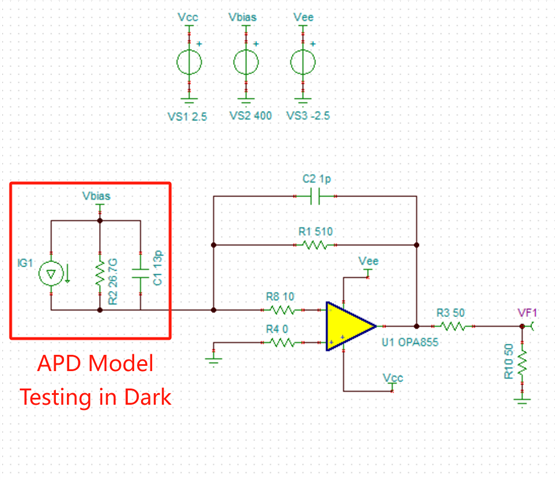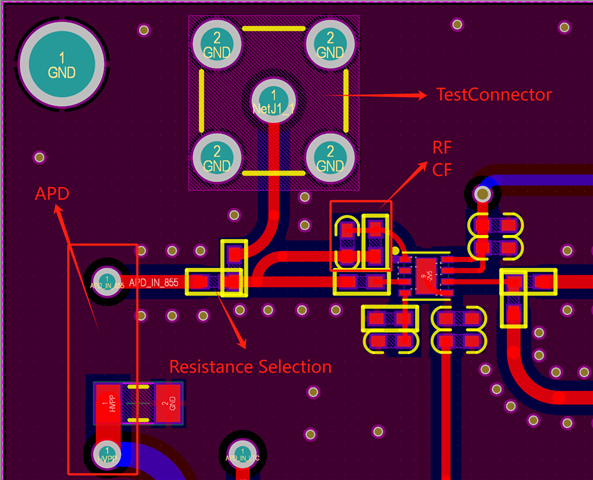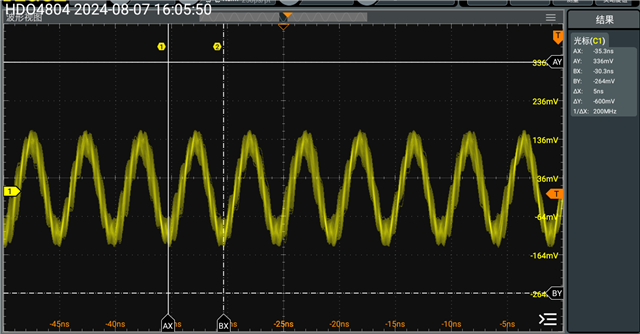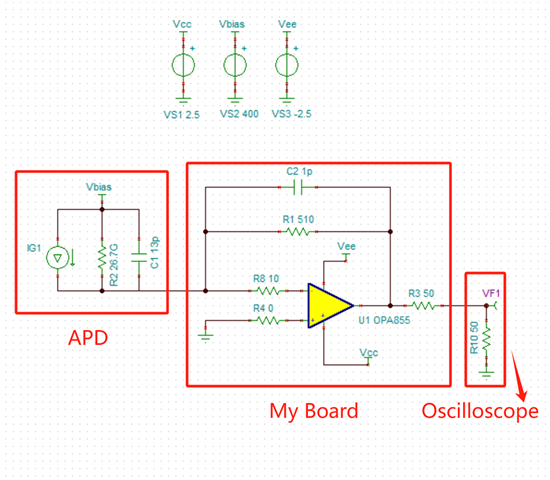Tool/software:
Hi,
I am debugging a TIA circuit, it's a single stage amplifier by OPA855, there are schematic and PCB layout as below:
The circuit outputs a high frequency oscillating waveform when testing in dark environment, the oscillating frequency is about 200MHz.
This problem bothered me for a long time, please help me find the reason, thanks very much!





